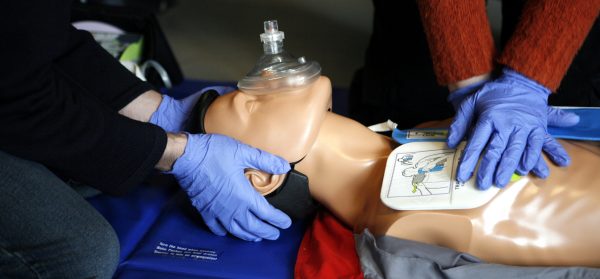
CPRNM® is a comprehensive directory designed to connect individuals and employers with top-tier training
providers including the AHA®, Red Cross®, and other training providers.*
Emergencies can happen anywhere anytime and almost all individuals must know what is CPR and the basic steps. When your breathing and heartbeat stop you are declared dead and it can happen from a number of causes like accidents to a sudden cardiac arrest. However, when intervened swiftly, the death can be prevented and this life-saving procedure is named CPR or cardiopulmonary resuscitation.
What is CPR and What Happens?
CPR is applied to a non-responsive, non-breathing person soon after the onset. During CPR, you try to restart the heart and keep the blood flowing through manual chest compression while increasing the blood oxygen concentration by giving rescue breaths. Fewer interruptions, sufficient speed, and adequate depth are crucial denominators determining the success of compressions.
When a person has a cardiac arrest outside the hospital his or her survival depends greatly on how early he or she receives CPR as a few minutes of oxygen deprivation can damage the brain cells resulting in death. According to the American Heart Association (AHA), about one-third of individuals are successfully resuscitated as most bystanders are either not trained or afraid that they might make things worse.
The Importance of Learning CPR
You should not learn CPR just because it is required for your career. According to studies, only 46% of individuals in need of assistance receive the help needed before a professional. If all of us have successfully completed at least a one CPR course the rate be can increased to at least 80%?
70% of total ‘out of hospital’ cardiac arrests occur at home and there is a high chance that the person you save with CPR to be someone you love. Therefore lets spread the word regarding what is CPR with the significance of learning it and its influence on the overall health of a society.
Each year, more than
350,000
out-of-hospital cardiac
arrests occur in the United States.

5 steps to performing CPR

Check the area of any safety hazards that may be harmful to you

“Are you ok?” Top that victim’s shoulder and shout,

Look for normal chest rise and fall

If no response, call 9-1-1

If no breathing and unresponsive
When to call for emergency help

Call 911 before starting CPR and get an AED, if there is one nearby.
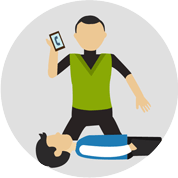
Do CPR for 2 minutes. Then call 911 and get an AED, if there is one nearby.
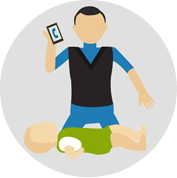
Do CPR for 2 minutes. Then call 911 and get an AED, if there is one nearby.
How do you give chest compressions?
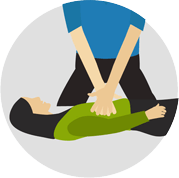
Use the heel Of one hand with the other hand stacked on top of it. Lace your fingers together.
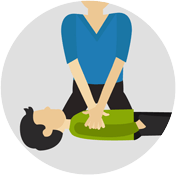
Use the heel Of one hand. If you need more force for a larger Child, use both hands as you would for an adult.
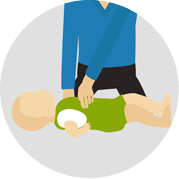
Use two fingers.
If the person is not breathing normally or is gasping, find the spot to do chest compressions.

Place two fingers on the spot where the ribs come together. Put the heel of your other hand just above your fingers on the breastbone.
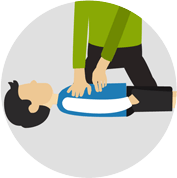
Place two fingers on the spot where the ribs come together. Put the heel of your other hand just above your fingers on the breastbone.
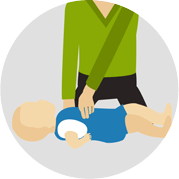
Place two fingers on the breastbone just below the nipple line.
How fast should you do compressions?
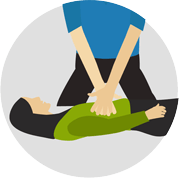
Do at least 100/per minute compressions (between 1 and 2 per second).

Do at least 100/per minute compressions (between 1 and 2 per second).
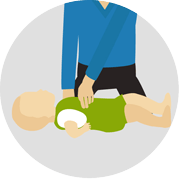
Do at least 100/per minute compressions (between 1 and 2 per second).

90 %
of people who suffer out-of-hospital cardiac arrests die.

70 %
of out-of-hospital cardiac arrests happen in homes.

100 to 120
During CPR, you should push on the chest at a rate of 100 to 120 compressions per minute
46 %
of people who experience an out-of-hospital cardiac arrest get the immediate help that need before professional help arrives.

36.8 %
In-Hospital Cardiac Arrest Survival Rate Children
Certify Online
We should all learn what CPR is and the basic steps as most out of hospital cardiac arrests occur at home. Without early CPR the chance of survival is much less than knowing CPR.
Choose a CPR Course and Certify Today!
References
- First aid – CPR – http://www.nhs.uk/Conditions/Accidents-and-first-aid/Pages/cpr.aspx
- CPR Also called: Cardiopulmonary resuscitation – https://medlineplus.gov/cpr.html
 May 16, 2017
May 16, 2017 

